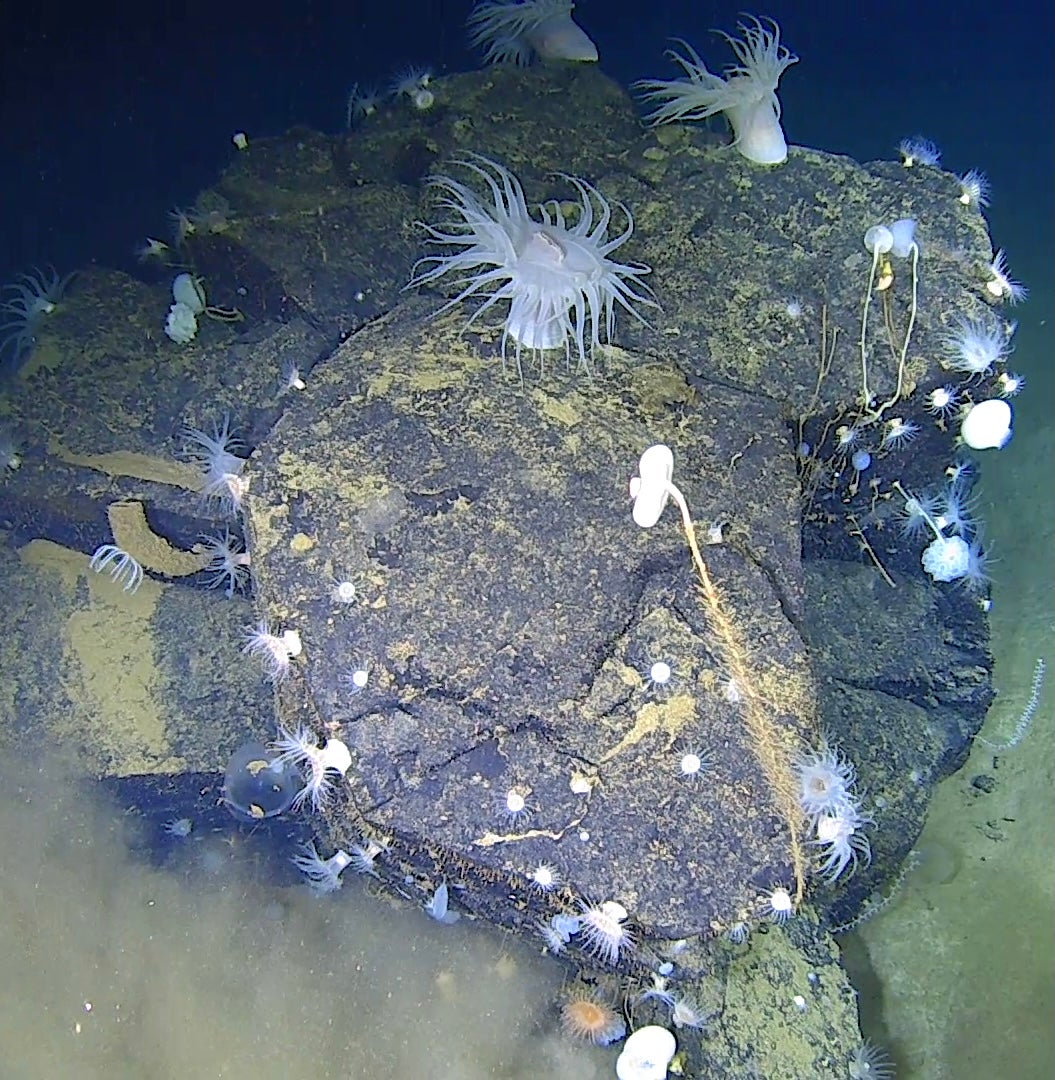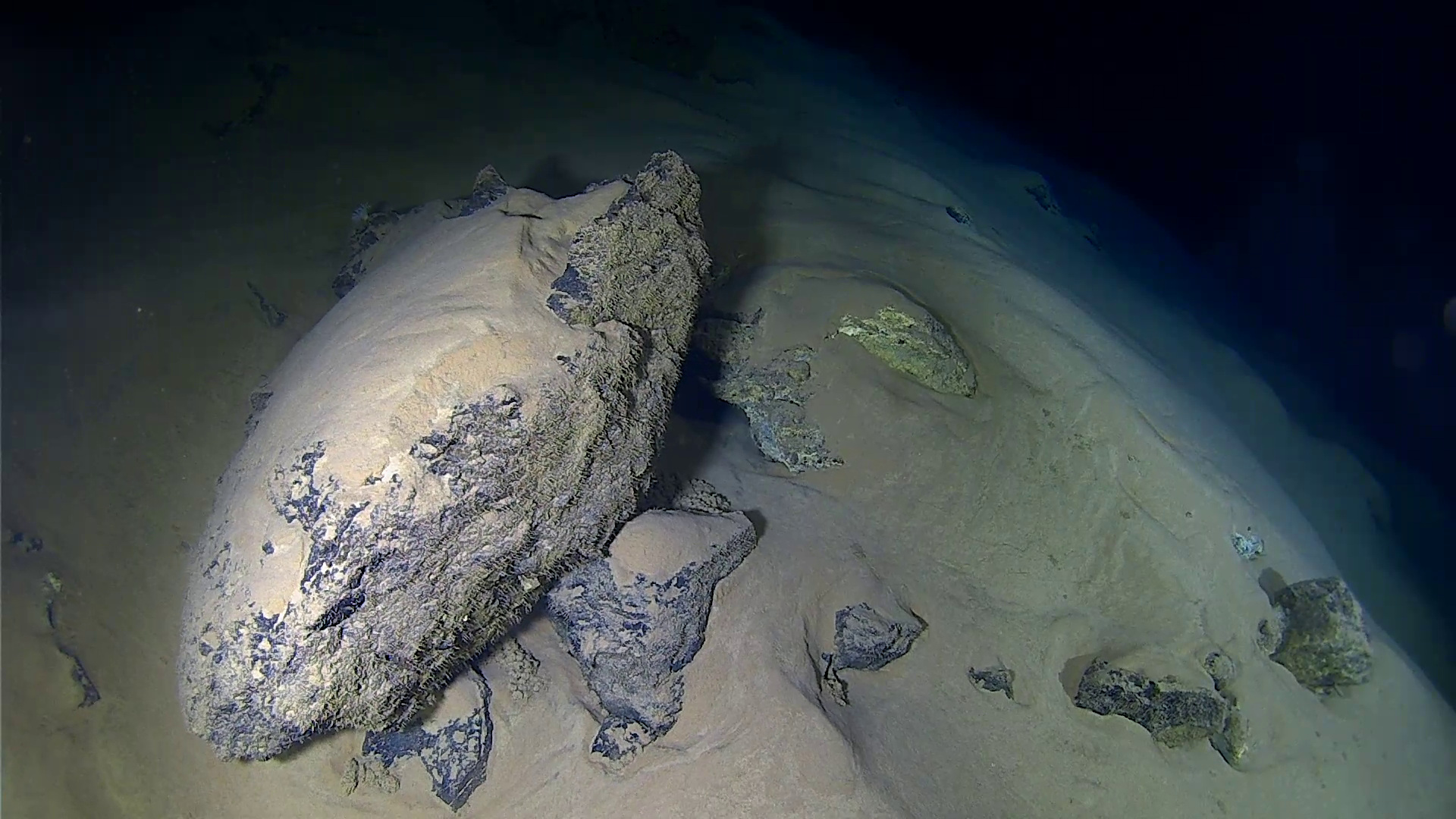There are two ways to explore the ocean miles below the surface. Some deep-sea scientists favor tools that can be operated from above, like remote probes and autonomous vehicles. This is the cheaper, safer, and arguably more sane option, which also offers more time at the bottom. And then there are those who advocate for the more dangerous, much more expensive, and inarguably more observational method, which involves packing humans into a roughly port-a-potty-sized space in a submersible and plunging them into the dark.
In the 2010s, Alan Jamieson would have championed the first as a more data-driven way of studying his area of focus—the deepest ocean trenches called hadal zones. But that changed when he began working as chief scientist for Five Deeps, American millionaire Victor Vescovo’s project to reach the deepest point in each of the planet’s oceans.
“I came into sub dives too scientifically,” says Jamieson, now a professor at the University of Western Australia. “I wanted good quality data, while Victor Vescovo and his team wanted to reach the deepest point.” It took most of the Five Deeps dives for us to realize we were both right,” and that each approach had its merits.
While working on Five Deeps, Jamieson descended to the depths himself—becoming the planet’s deepest-diving Brit, and the eighth deepest-traveled overall, after plunging below 35,000 feet in the Mariana Trench. It was there that Jamieson began to understand the benefit of the “serendipitous eye”: the context scientists can only gain by being present with a species in its natural habitat.
It also led him to declare that, after more than 20 years of studying the sort of life that dwells in such forbidding places, the way we talk about life in the deep sea needs a PR shift. His biggest suggestion: Stop calling deep-sea life “alien.”
“We’ve been telling people the deep sea is alien and weird and horrible,” Jamieson says. “And so it’s hard to get people to care about it.” Instead, he suggests, focus on what makes the deep ocean amazing. There’s the mind-blowing scale of it all, to start. And there’s the remarkable variety in habitats and animal adaptations that you can find in the deepest trenches. And there’s the fact that the animals who live there are actually very similar in many ways to those we know from shallower waters—they’ve just had to make do with less.
Nautilus caught up with Jamieson to discuss how an industrial engineer-in-training ended up becoming one of the planet’s deepest-diving humans, how biology is like engineering, and why the rest of us should care about life in the deep. His remarks have been lightly edited for clarity.
If you told 10-year-old Alan that he would be studying the deepest parts of the ocean as his career, what do you think he would say?
Never in a million years would he believe me. I got into all of this by accident. I’ve heard other people talk about how they’ve always dreamt around being a marine biologist and spent their childhood staring at the ocean. Not me. I never even wanted to become a scientist.
I did a degree in industrial design. For my last year, I needed to design something and connected with some guys building underwater equipment. A year after I graduated, a job came up at their lab for a mechanical engineer. I got the job, started doing deeper stuff, and started paying attention to the animals we were studying.

What was it like going from engineering to biology?
I always say that biology is like engineering, but smellier. One of the weird perspectives I have, I inherited from my first professor—he was a physiologist who got into engineering. When you look at a fish and try to reverse engineer it, you see that it’s a vehicle like anything else. It has propulsion, structure, and buoyancy calculations that must be worked out. It has to cope with pressure, water, salt imbalances. It needs energy and it produces energy. It has to react to obstacles. It’s bizarre how many solutions you come to, in designing equipment that evolution has already solved for you.
What are some of the most startling or fascinating discoveries you’ve made about the organisms or the ecology of the deep sea?
In 2007, I first broke loose from the rest of my lab and went a bit rogue on my own to do this stupid deep stuff. There was an element of, this is so risky, it’s ridiculous. I didn’t even tell people we were doing it.
I ended up in Samoa and went out to a trench off New Zealand. Because we were completely disorganized, we’d never actually built the lander we were using to observe fish in its entirety, so it arrived in pieces. We just built it on the deck and shot it to 20,000 feet below the surface. We were trying to work out how deep fish go and why they live at these extreme depths. And one afternoon on the second deployment, we watched our first video of a fish deeper than 20,000 feet.
We didn’t really tell anyone, and then a few months later filmed a bunch of them—snailfish—in Japan. And that went totally viral. But for me it’s that first moment, when you realize, the risk-taking and all these ridiculous big ideas might actually pay off.
It’s genuinely weird to see an animal you’ve studied for 20 years alive. It’s a bit intimate because you know you’ve just interrupted their Tuesday afternoon.

What sort of tools and techniques do you use to study the deep sea?
Historically I’ve used mostly landers, which are freefall platforms that we just literally release off the side and we have no control of them whatsoever. There are cameras, traps, all sorts of sensors on the lander, and that’s great for bringing mobile animals to you. A lot of them don’t like vehicles chasing them. With landers, you sit there silently and record stuff happening.
In the late 2010s, I’ve been more involved in human-occupied subs, which opens up a whole new dynamic. For the depths where I work, the only thing we can use are landers, because nothing else can go that deep. It would be great if there was access to trawling and ROVs (remotely operated vehicles) and AUVs (autonomous underwater vehicles), but they just can’t go there yet.
You are one of the few deep-sea scientists who has visited the environment you study. What’s the advantage of being down there versus remote study?
Going down there in person is amazing—it’s genuinely weird to see an animal you’ve studied for 20 years alive. It’s a bit intimate because you know you’ve just interrupted their Tuesday afternoon.
At the same time, I’m conscious I’m doing it because it’s fun. There’s an element of adventure to it, and I quite like that—I make no apologies for it. Many scientists say our work should be just for the sake of conservation, for saving the planet. I still believe there’s room to have fun.
For my last job, we did about eight dives in the east Indian Ocean, and we dove on a manganese nodule field [rocks made of layers of manganese and iron, found only in the deep sea]. There were these billions of black balls on the seafloor, and as we’re looking at them we’re like, this is weird. They were almost perfectly spaced and so we realized there’s an order to this, down at 20,000 feet. That’s something you just don’t get from doing it remotely, that context.

Common perception of the deep sea is that it’s a distant, alien world, completely disconnected from us. But your work has shown that’s not the case, and that deep-sea animals are accumulating both pollutants and microplastics. How has that shaped your work?
Even before all of the mega-deep stuff, I used to trawl at 13,000 to 16,000 feet in the North Atlantic, and if you trawl anywhere between Ireland and New York you will find clinker—old coal left from steamships. It’s really annoying, because half your haul is spent coal. Between that we’d also get shoes, bottles, old china plates. And you start to realize that once something goes down deep, there’s nowhere else for it to go.
After a few years of working in the trenches we had amassed quite an archive of stuff—mostly little amphipods, which you can collect pretty easily. I remember reading another paper about microplastics and pollution, and each paper I’m reading covers slightly deeper terrain than the next. I thought, let’s just put an end to the wondering, and take a handful from all the deepest places we’ve ever been.
We did the contaminant paper first. I was living in Aberdeen, Scotland, at the time, and the guy running it in the lab came back three weeks later and said, you know the PCB level in these amphipods in Mariana is higher than in an earthworm in Aberdeen?
Now, I didn’t really want to go into plastic. Once you do that, you become the deep-sea plastic guy. But I put a student on it, and she came downstairs within the first day and told us, I just pulled one open and you can see fiber in it. That was quite sobering.
At this point, I’ve come to terms with it. I’m not sure why the media is surprised anymore. I didn’t expect the quantities, but it makes sense as once it gets down there it’s the end of the road.
I think the most sobering thing about the microplastics study is that the types of plastic we were finding looked like first-generation textiles. There’s the scary thing: the new stuff has yet to arrive. It takes a long time for plastic to sink. Even if we didn’t put a single piece of plastic back in the ocean tomorrow, the deep sea is 20 years behind.
Do you hope that members of the public reading about deep-sea pollution might change their behaviors?
That’s a really difficult question, because part of me has given up on humanity. No amount of telling ourselves what’s wrong seems to make a difference. But I do think perhaps we’ve been going about it the wrong way.
There’s this theory about using the “sky is falling” method: when you tell people that something bad is happening and it’s all your fault, people become numb to it. Ultimately they give up. They think, how could I ever make a dent in any of this?
If you get people to care about that environment, though, you don’t have to preach to them. I think we’ve gone too hard on the negative. Any documentary you can guarantee starts off with major chords and tells you about all the animals and how wonderful they are. And at the end it goes into minor chords, and then how you’re all guilty and you’re destroying the planet.
But if you do it the other way around—for example, if you tell people, this is the deep sea, this is how amazing it is—I think it’s easier for people to care. We’ve been telling people the deep sea is alien and weird and horrible, and so it’s hard to get people to care about it. Animals are no longer animals; they become monsters and aliens.
It takes a long time for plastic to sink. Even if we didn’t put a single piece of plastic back in the ocean tomorrow, the deep sea is 20 years behind.
What do you find most fascinating or compelling about the deep sea, that you would tell someone about to get them to care?
I love the fact it’s so huge. I think people struggle with scale. You start talking about the size of the Pacific Ocean, and it’s hard for people to visualize that. It’s 65 percent of the planet hiding in plain sight.
The interesting thing is most animals in the deep sea are exactly the same as shallow water animals. They just live deeper. They’re not any more creepy. A lot of the creepy stuff is creepy because they live in the dark, not because it’s deep. The deepest jellyfish is just a jellyfish, the deepest octopus is just an octopus. But because they’re not weird, they don’t fit the stereotype. It’s easier to go looking for the horns and the teeth, and then blow it up to look like the size of a dog.
What I also like is that these animals’ distributions are so huge. There’s a particular fish called a cusk eel that most people haven’t seen or heard of, but their footprint on Earth must be about 45 percent of the planet. It never gets on TV, but it’s incredibly consistent.
There are genuinely enigmatic things going on, but it’s not the things you think. I hate to say that it’s to do with how little we’ve explored, as that’s another stereotype that I don’t really like. But really, it’s how little we really have a grip on the magnitude of it. And when you start to think about how few people engage with it, that is one of the most frightening things.
If the deep sea isn’t as alien as it’s often described, how do you keep people excited about deep-sea science?
A lesser-known secret is that the bottom of Challenger Deep is pretty boring. Most of what’s going on is inside the sediment. I certainly wouldn’t bother diving it again. The Mariana Trench doesn’t mean anything to the eye. It doesn’t give us anything. But it’s awesome, right?
The five deeps are essentially the seven summits upside down—you’re bringing in the anthropocentric point of view, and that makes it phenomenally exciting. You look at Mount Everest and you could think, that’s just a big rock. It doesn’t improve your life in any way, but doesn’t it still get you interested?
A bird probably doesn’t care about these things, but humans have that. And most of the landscape underwater will produce the same sense of awe. If you could see it with your own eyes, you’d think, I’ll just have my sandwiches and bottle of wine and soak this in.
When you bring in that sense of adventure, there is an element of, let’s go back to Challenger Deep. In this day and age, I can’t think of any government who would send you to study Challenger Deep—the scientific rationale would be pretty weak compared to funding science on COVID or climate change. To study Challenger Deep, you need these private funded maniacs who build these thousand-meter subs and let you play with them.
But I love that a lot of stuff I do is pure exploration. By default there has to be an element of adventure to it. And hopefully that helps get people interested in the work I do.
Lead image: Alan Jamieson on a recent sub dive. Credit: Paige Maroni, WA Museum


































